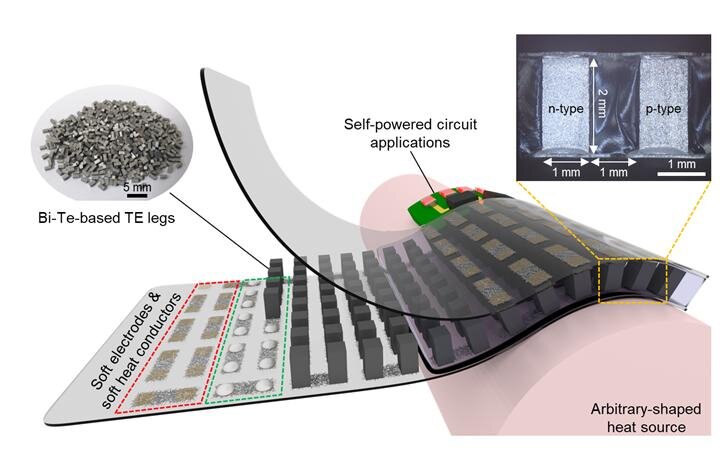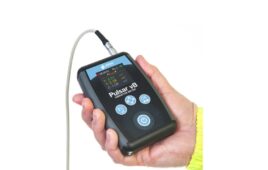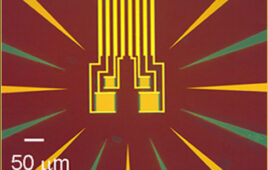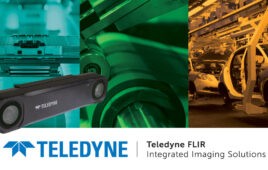Researchers continue to search for improved solutions to power the many wireless, wearable sensing devices that are being developed to avoid frequent, or as frequent, charging and/or battery replacement. Two of the prominent research areas include thermoelectric generators (TEGs) and piezoelectric energy harvesters.
With wearable thermoelectric generators (TEGs), the amount of thermo‐generated power strongly depends on the temperature difference between the TEG and the human body that is very low compared to industrial applications. Focusing on human-body worn TEGs, one research group developed flexible thermoelectric devices with high power generation performance by maximizing flexibility and heat transfer efficiency.Sou
Source: The Korea Institute of Science and Technology (KIST) on Tech Xplore
Through its efforts, the research team improved the flexibility while lowering the resistance of the thermoelectric device by connecting an inorganic-material-based high-performance thermoelectric device to a stretchable substrate composed of silver nanowires. The excellent flexibility allows stable operation even when it is bent or stretched. Inserting metal particles with high thermal conductivity inside the stretchable substrate increased the heat transfer capacity by 800% (1.4 W/mK) and power generation by a factor higher than three.
Focusing on piezoelectric energy harvesting, another research group evaluated the current progress in piezoelectric energy harvesting. As part of a thorough summary of the latest trends, materials, architectures and technologies used in harvesting energy from the hand, wrist, arm and shoulder movements, they found the upper limb to be an attractive location for harvesting energy from human motion for powering healthcare devices. Their investigations showed that the wrist is the best place for piezoelectric harvesting energy harvesting from the upper limb, since it yields the highest power density of 15.69 mW cm−3 vs. 14.33 mW cm−3 for shoulder, 4.92 mW cm−3 for arm and 400 µW cm−3 for hand-located harvesters.
Featured image source: Wiley Online Library
Filed Under: Sensor Tips




